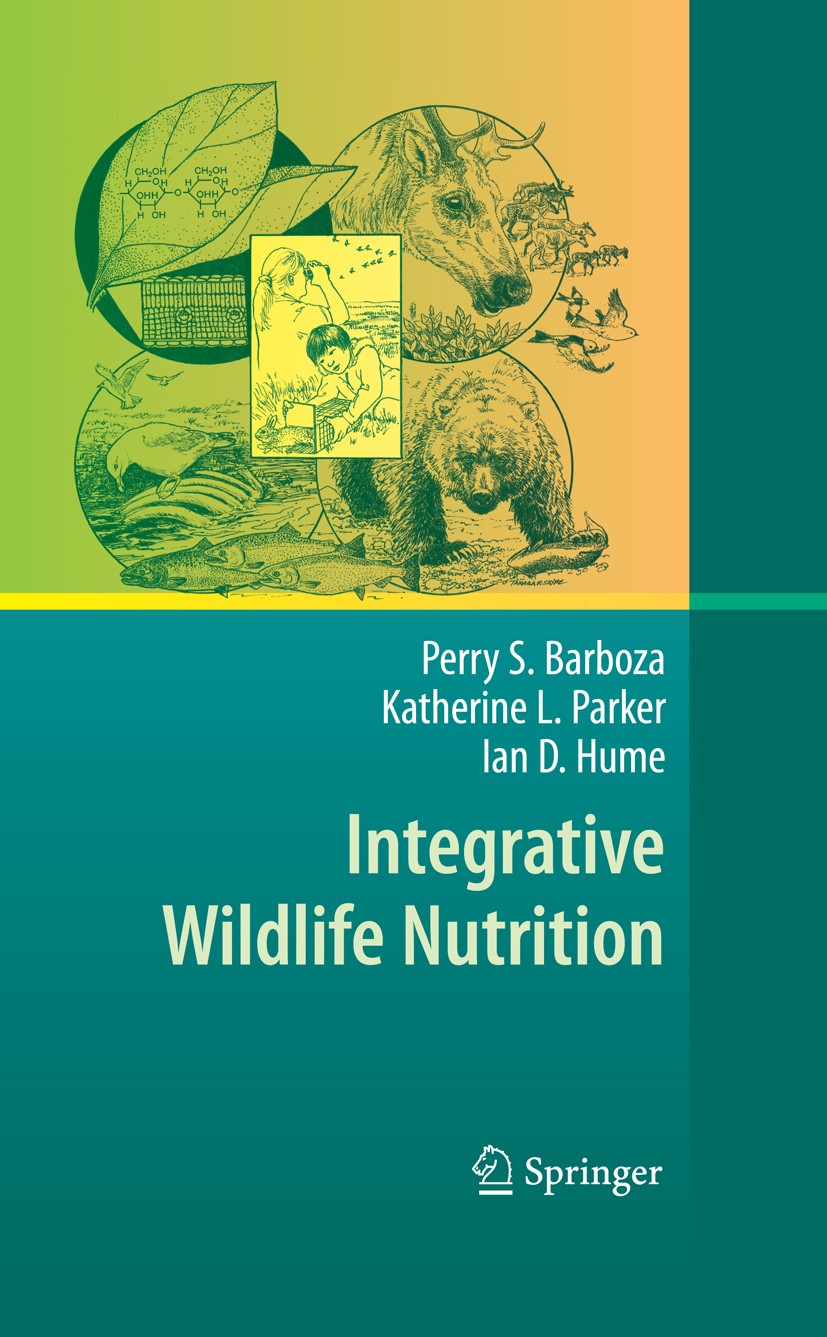| 书目名称 | Integrative Wildlife Nutrition |
| 编辑 | Perry S. Barboza,Katherine L. Parker,Ian D. Hume |
| 视频video | http://file.papertrans.cn/470/469008/469008.mp4 |
| 概述 | Elucidates the importance of wildlife nutrition from molecules and cells to ecosystems.Key concepts are illustrated with flow diagrams of biochemical pathways and with practical examples for monitorin |
| 图书封面 |  |
| 描述 | Nutrition spans a wide range of mechanisms from acquisition of food to digestion, absorption and retention of energy substrates, water and other nutrients. Nutritional principles have been applied to improving individual health, athletic performance and longevity of humans and of their companion animals, and to maximizing agricultural efficiency by manipulating reproduction or growth of tissues such as muscle, hair or milk in livestock. Comparative nutrition borrows from these tra- tional approaches by applying similar techniques to studies of ecology and physiology of wildlife. Comparative approaches to nutrition integrate several levels of organization because the acquisition and flow of energy and nutrients connect individuals to populations, populations to communities, and communities to ecosystems. Integrative Wildlife Nutrition connects behavioral, morphological and biochemical traits of animals to the life history of species and thus the dynamics of populations. An integrated approach to nutrition provides a practical framework for understanding the interactions between food resources and wildlife popu- tions and for managing the harvest of abundant species and the conservat |
| 出版日期 | Book 2009 |
| 关键词 | Absorption; Calcium; Conservation biology; Phosphor; Vitamin; animal ecology; biology; chemistry; ecology; en |
| 版次 | 1 |
| doi | https://doi.org/10.1007/978-3-540-87885-8 |
| isbn_softcover | 978-3-642-03695-8 |
| isbn_ebook | 978-3-540-87885-8 |
| copyright | Springer-Verlag Berlin Heidelberg 2009 |
 |Archiver|手机版|小黑屋|
派博传思国际
( 京公网安备110108008328)
GMT+8, 2025-11-16 19:52
|Archiver|手机版|小黑屋|
派博传思国际
( 京公网安备110108008328)
GMT+8, 2025-11-16 19:52


